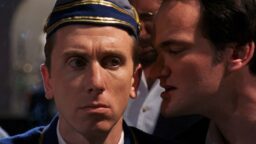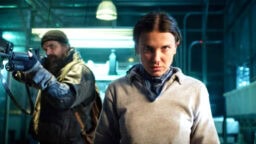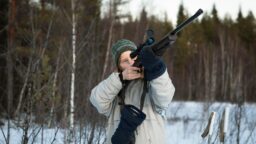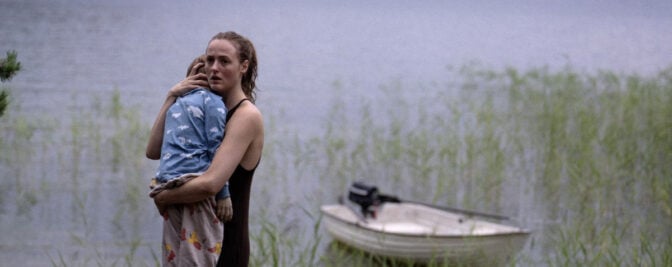Author John Ajvide Lindqvist (“Let the Right One In,” “Border”) has once again adapted a novel to film, with Norwegian Thea Hvistendahl making an impressive feature film debut as its director. “Handling the Undead” had its world premiere at Sundance and opened the Gothenburg Film Festival.
While the film’s zombie theme places it in the horror film genre, you’ll have to wait until the end if you’re hungry for blood (no pun…) because the film is more about dealing with grief than surviving zombies. It is a dark and melancholic contemplation of how it would be to meet loved ones again as resurrected from the dead – even though they appear to be empty shells without souls…
As with Frankenstein, electricity sparks life into the bodies of the dead. Oslo experiences a blackout after mysterious static energy causes all the car alarms to go off. A piercing sound cuts through the air. When the power is back on, the world is not the same.
The film deftly navigates between three different families dealing with grief. Renate Reinsve (“The Worst Person in the World”) plays Anna, who lost her little son. Her aged father (Bjørn Sundquist) looks after her as best he can but mourns the grandson himself. He is tending to the boy’s grave during the blackout when faint knocks from below prompts him to investigate.
The elderly woman Tora (Bente Børsum) has just said goodbye to her elegant partner Elisbet (Olga Damani), who is layed to rest wearing a beautiful dress and nicely done hair and make-up in her coffin. It’s a somber set – grief hits especially hard when you are left alone. The third family consists of the father, David (Anders Danielsen Lie, also from “The Worst Person in the World”), the mother, Eva (Bahar Pars), and their two children (Inesa Dauksta and Kian Hansen). Eva is driving her car when the static energy causes the radio to crackle. The road chaos causes an accident, and she ends up in a hospital bed. Eva is pronounced dead – until she starts breathing again in front of David and the bewildered hospital staff.
The story moves forward slowly and steadily, scen after scen, without ever getting frightening. There are no scare tactics like in classic horror films. We are never surprised. Instead, the film gives off eerie vibes from start to finish. A creepy discomfort as the camera slowly zooms in, often towards dimly lit rooms looming in the distance while we – and the camera – are lurking in the dark on the other side of the doorway. Or on someone walking up a creaky staircase with us watching from below.
The color palette is as dull and dark as the Nordic summer night itself. The camera remains static, and the visuals could be described as Hopper-stylized kitchen sink realism. Not to let rapid camera movements disrupt the film’s tone feels pure somehow. There are no dramaturgical shock moments to compete with the sadness, loss, and pain that is the core of the story; a story that’s told with the help of images and sound – dialogue is minimal.
The package is neat and clean, and maintains its core mode beautifully (apart from some minor choppiness in the second half.) The film stands out from standard genres with its distinct theme and narrative approach.
“Handling the undead” may not provide any answers. It contemplates the importance of letting go. To move on. To chose life.
Rating: 4/5







